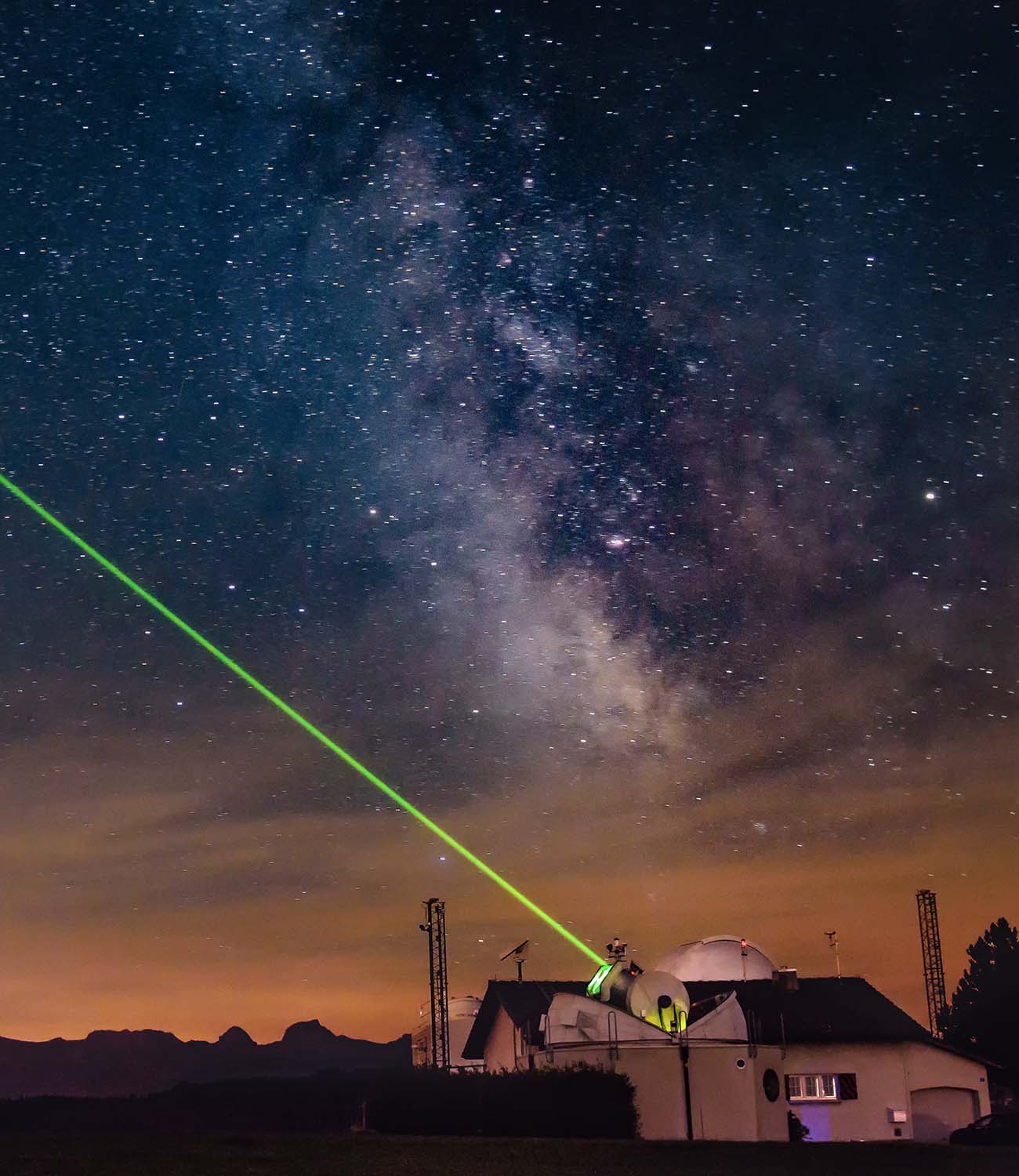Universe
Astronomy in Bern with a double anniversary
In November 2022, the Astronomical Institute of the University of Bern (AIUB) celebrated a double anniversary: 200 years of the old Bern observatory (Uraniae) and 100 years of AIUB. On Friday, November 25, and Saturday, November 26, 2022, the University of Bern celebrated its double anniversary with a ceremony, a scientific symposium, and lectures and activities for the general public. An extensive illustrated book was also published.
Today, the Astronomical Institute of the University of Bern plays a leading role at an international level in the fields of fundamental astronomy, satellite geodesy and the detection of space debris. The international profile is no coincidence, as astronomy and geodesy have a long tradition in Bern. In 1822 the first Uraniae observatory was built at the current location of the Building for Exact Sciences (ExWi) at Sidlerstrasse 5 in Bern, at the exact spot that later defined the origin of the Swiss National Survey (Dufour map). The Muesmatt Observatory was then established in 1922 and officially inaugurated on November 25, 1922 as the Astronomical Institute of the University of Bern. “On November 25 and 26, we celebrated 200 years of Uraniae and 100 years of AIUB,” says Adrian Jäggi, Director of AIUB, delighted about the double anniversary.
The double anniversary was celebrated with an official ceremony and a scientific symposium with international guests. Speakers included Claude Nicollier, former astronaut and professor at EPFL, Tim Flohrer, head of ESA’s Space Debris Office, and Markus Rothacher, President of the Swiss Geodetic Commission and Professor at ETHZ. On Saturday, November 26, lectures and activities for the general public took place all day long, and from 5 p.m. onwards, the night sky could be observed from the Muesmatt Observatory. A richly illustrated photographic documentation entitled “Astronomy and Geodesy in Bern” was also published on the occasion of the double anniversary.
About the AIUB
High-precision orbit determination and detection of space debris
Today, the AIUB is an international leader in satellite geodesy, the surveying of the Earth using satellites. The AIUB has made a name for itself with the development of the so-called Bernese GNSS software and its application for the high-precision orbit determination of satellites. Thanks to its unique expertise in the field of fundamental astronomy, the AIUB also plays a leading role at an international level within the framework of numerous research collaborations.
On the observation side, Bern is a leader in optical sky surveillance: With the Zimmerwald Observatory, the AIUB has the world’s largest (in terms of the number of telescopes) observatory for the optical detection, characterization and cataloging of space debris. Thanks to its high degree of automation, the Zimmerwald Observatory is also one of the world’s most productive stations that perform laser distance measurements to satellites around the clock (depending on the weather).
